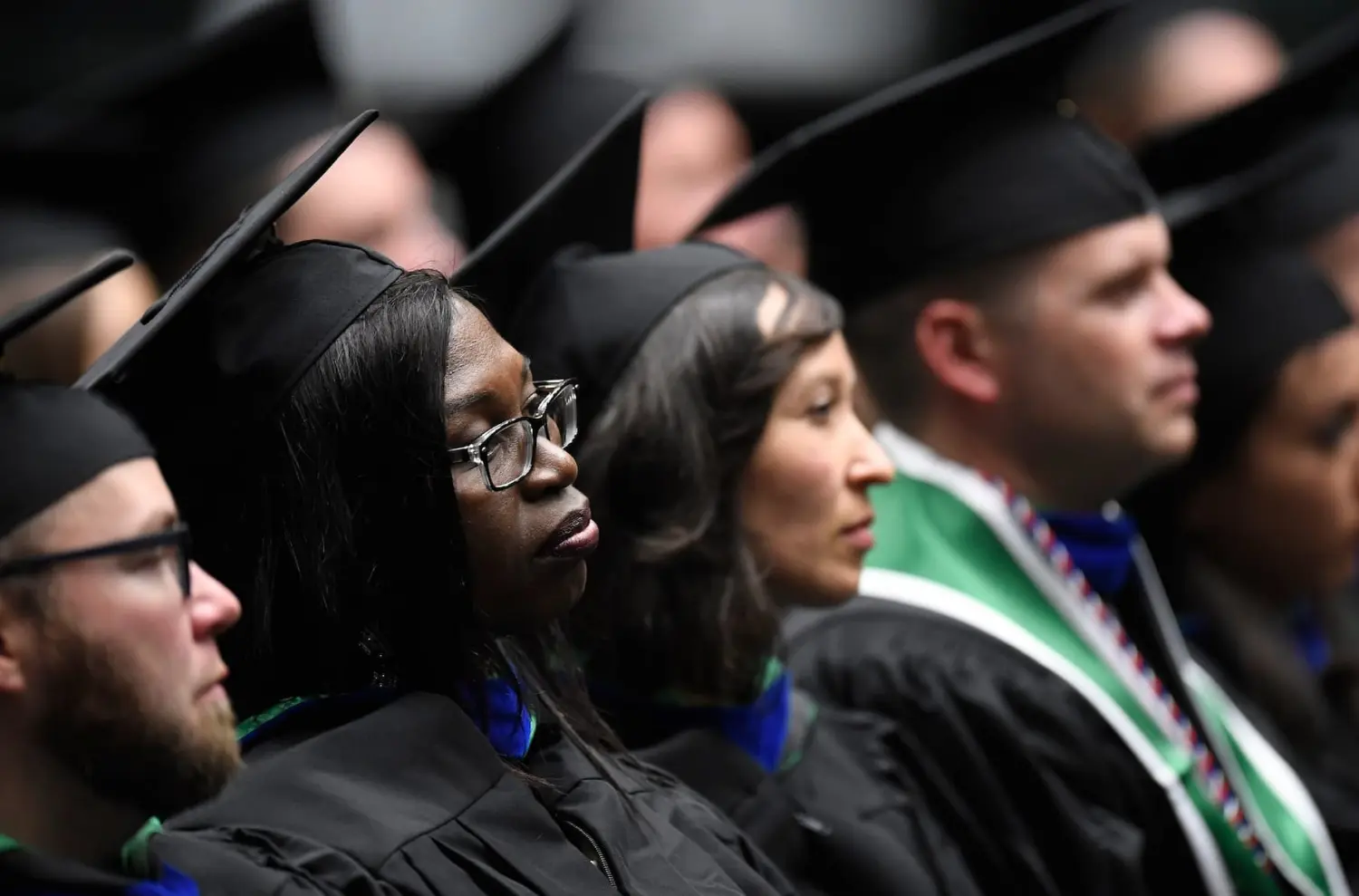We removed the term “late bloomers” from this post in response to feedback that the term could be misinterpreted to imply that success is only achieved by going to college.
There is a widely held assumption that the vast majority of people go to college right after high school and finish their education in their early 20s. In reality, about 30% of current college students started their programs in their 20s or later, and more than one-third of undergraduate students are at least 25 years old. However, we know comparatively little about these later-in-life college graduates and the effect of later college completion on graduates’ earnings.
In a recent working paper, we use the National Longitudinal Survey of Youth (NLSY) and Census data to document the persistent and widespread phenomenon of Americans enrolling in (and completing) college programs in their 30s, 40s, and 50s. In this piece, we provide data on these late graduates and describe some of the problems associated with overlooking this sizable group of students.
Who completes college later in life?
To assess the size of the late graduate population, we first looked at 50-year-olds in each cohort of our data who have graduated from college (with the most recent cohort of 50-year-olds born around 1970). We checked on the share of these graduates who received their college degree after turning 30.
As shown in Figure 1, the share of college graduates who are late graduates has fluctuated over time based on the graduates’ birth year. For the full population, this ranges from a low point of 16% for those born in 1960 to a peak of 28% for those born in 1940.
Figure 1 also reveals some demographic differences. For example, over the years, 32% to 49% of Black college graduates have been late graduates, compared to 15% to 26% of white college graduates. Notably, we find that the share of male college graduates who are late graduates has steadily increased since the 1950 birth cohort, while the share of female college graduates who are late graduates has declined.
We also examined the NLSY data to look at more recent birth cohorts (i.e., those under 50 years old). These data confirm a continued increase in the share of late graduates among college graduates past the 1970 birth cohort, with the largest increases for Hispanic and Black graduates.
A look at earnings trajectories
Deciding whether to enroll in college later in life can involve different considerations than enrolling earlier in life, including different financial implications. We sought to understand whether the returns to college education differ by age at graduation by looking again to the NLSY data.
Here, we analyzed the wage profiles of four cohorts distinguished by whether and when they finished college: (i) “early college” (graduating by age 24); (ii) “medium college” (graduating between the ages of 25 and 29); (iii) “late college” (graduating at or after age 30); and (iv) “never college” (never obtained college degree). We conducted a regression analysis in which, for each cohort, we regressed (log) hourly wages on years of work experience, accounting for the experience accumulated prior to obtaining a college degree and the experience accumulated as a college graduate.
Figure 2 shows what we found.
Not surprisingly, the “never college” group has the lowest wages and slowest growth trajectory over time, while the “early college” group has the highest growth trajectory. The “medium college” group has wages close to the “never college” group before graduation and receive a substantial college premium upon graduating. Interestingly, before they graduate college, the “late college” group earns significantly more than the “never college” group and more than the “medium college” group earned before they graduated. Late graduates also benefit from a substantial college premium upon graduation, and they have the steepest return to experience among college graduates.
While the results do not lend themselves to quantifying the exact gain from late education, they suggest that later-in-life education does increase earnings, especially for disadvantaged populations for whom it can be more difficult to complete college earlier in life. This suggests an argument in favor of educational subsidies targeted for these populations.
What we can learn from better understanding later-in-life college graduates
Much of research literature in higher education pays little, if any, attention to the fact that so many college students enroll later in life. This creates a risk that we might misunderstand data on college enrollment/completion and the returns to college. For example, if going to college at an older age means that graduates have lower post-college earnings, we might underestimate the returns to college—for the full population of college graduates—if we don’t account for the presence of late graduates.
Indeed, this seems to be the case. Consider what we would have found had we aggregated the early, middle, and late college groups’ wages in Figure 2 to estimate the overall returns to college. We calculate that aggregating in this way would result in underestimating the returns to early college by around 27%.
Late graduates also play a key role in understanding how race and gender differences in college completion have shifted in recent decades. There have been persistent differences in college completion rates by race. As seen in Figure 3, the White-Black gap in college completion increased across birth cohorts from eight percentage points in 1930 to 14 percentage points in 1970. But especially in recent cohorts, later-in-life Black graduates have reduced the college graduation gap. In the 1970 birth cohort, the 14-percentage point graduation gap that showed up at age 30 (dark blue bar) was down to an 11-percentage point gap at age 50 (orange bar). This highlights the importance of later-in-life options and support for Black college enrollees.
A similar analysis of the college gap across genders shows female late graduates similarly contributed to reducing the gender college gap from the 1950 birth cohort onwards. The college gap at age 50 even reversed in favor of women from the 1960 birth cohort onwards.
Putting knowledge to use
While many students enroll and graduate from college in their 20s, late graduates comprise an increasingly large share of the college graduate population. About 20% of college graduates are late graduates, and later-in-life enrollment among Black and female students has substantially reduced or reversed racial and gender gaps in college completion. While students who graduate early in life (e.g., by age 24) have the greatest wage benefits from college completion and a longer lifespan to enjoy those benefits, late graduates also receive a substantial college premium after graduation.
We see two main implications from this work. First, different forces seem to drive early versus late educational attainment. The decision to enroll in college should therefore be studied within the context of early and late graduates’ decisions over the life cycle. How different are the financial constraints that they face? How do they perceive the returns to a college degree? What are the family constraints that prevent individuals from returning to college? Understanding how these factors affect decisions is key for designing appropriate policy measures for addressing them.
Second, because increases in educational attainment are generally viewed as an advantage for innovation, economic competitiveness, and social mobility, our findings advocate strongly for a better awareness of late graduates in the design of educational public policy. This should include a serious look at expanding financial aid programs for adult learners.









